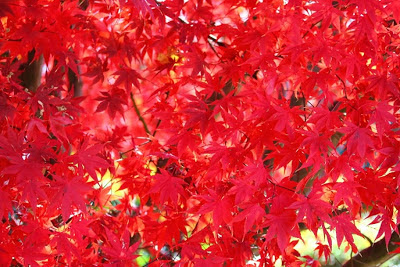Friday, November 30, 2012
Thursday, November 29, 2012
Wednesday, November 28, 2012
 |
Image Credit: HiRISE, MRO, LPL (U. Arizona), NASA |
Tuesday, November 27, 2012
Robert Frost
Monday, November 26, 2012
Stars and Clouds at Dusk
Friday, November 23, 2012
Thursday, November 22, 2012
Thanksgiving 2012
Wednesday, November 21, 2012
Monday, November 19, 2012
- Program Mode - Set to Manual.
- Autofocus - Turn off, or set to Manual.
- White Balance - Set to Daylight or use a custom white balance (especially if your camera is modified).
- Drive - Set to One Shot.
- ISO - This is discussed in detail in a following section, but generally should be set to 1600 or 800 for long-exposure deep-sky astrophotos.
- Metering - Generally doesn't matter, but you can try setting it to Spot if you are shooting the Moon or Sun (with proper filtration)
- Exposure Compensation - Set to Zero, no exposure compensation. Doesn't really matter because you are not using autoexposure.
- Shutter Speed - Set to the exposure you want, up to 30 seconds can usually be dialed in directly. For longer than 30 seconds, set to Bulb. On some cameras, Bulb may be a separate exposure mode setting, or it may be accessed on the shutter speed dial past the 30 second setting.
- Self Timer - If you don't have a remote release, you can use the camera's self-timer to trip the shutter so you don't have to touch the camera, which will help reduce vibrations and possible star trailing.
- Mirror Lock-Up - For long exposures with a very solid mounting, it probably is not necessary to lock the mirror up before an exposure. For short exposures for high-resolution planetary or double-star work, it is a good idea to lock the mirror up before the exposure to reduce camera movement and vibration caused by mirror slap. Some cameras access this setting with a control on top of the camera and some through a custom setting in a menu. Some cameras like the 20Da require the shutter to be pressed once to lock the mirror up, and then be pressed again to actually open the shutter. Take care to learn exactly how your camera works for this feature, because you could press the shutter thinking you have opened it for a long exposure and go off to do something else, and then come back only to find that all you had done was lock the mirror up and that no exposure had been taken. Some cameras do not offer a mirror lockup up at all, but they may move the mirror up out of the way as the first thing when using the self timer. Read the camera manual to learn how your particular model works.
Sunday, November 18, 2012
Pod Thingys!
 |
| I found these really cool little pods growing in our mulch. I'm not sure what they are. |
 |
| If you look closely you can see a face on this one. |
Thursday, November 15, 2012
Wednesday, November 14, 2012
Tuesday, November 13, 2012
Sunday, November 11, 2012
Happy Veterans Day!
 |
| Thank you to all veterans past and present for the freedoms we enjoy today! God bless you all! |
 |
| My father, Flynn Mabry, served his country in WWII in the Army Air Corps. He was stationed in Thorpe Abbotts, England where he served as an airplane mechanic with the 100th bomb group, 350 bomb squadron. He helped to keep the B-17s flying! |
Friday, November 9, 2012
Thursday, November 8, 2012
Super Massive Spider Web
Wednesday, November 7, 2012
Monday, November 5, 2012
Saturday, November 3, 2012
Friday, November 2, 2012
Labels:
astrophotography,
astropix,
Genesis,
God,
sept. 2012
Thursday, November 1, 2012
Him Loves Him Rabbits
Subscribe to:
Comments (Atom)









































